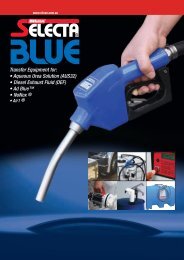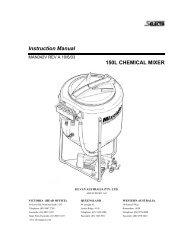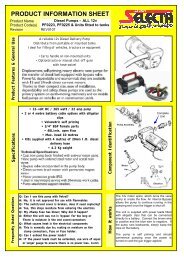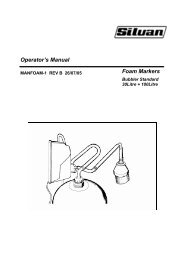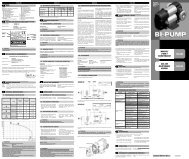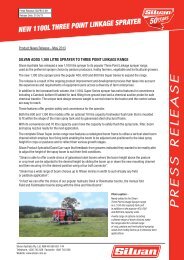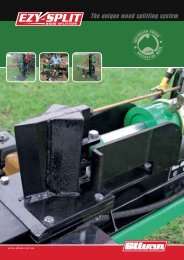Spray Technology Reference Guide: Understanding Drop ... - TeeJet
Spray Technology Reference Guide: Understanding Drop ... - TeeJet
Spray Technology Reference Guide: Understanding Drop ... - TeeJet
Create successful ePaper yourself
Turn your PDF publications into a flip-book with our unique Google optimized e-Paper software.
Section 3<br />
<br />
<br />
<br />
<br />
<br />
<br />
<br />
<br />
<br />
<br />
<br />
<br />
<br />
<br />
<br />
<br />
<br />
<br />
<br />
<br />
Figure 3. Optical array probe.<br />
Phase Doppler particle analyzers (PDPA)<br />
PDPA are flux sampling instruments and fall into the non-imaging<br />
(single particle counter) category. These analyzers consist of a<br />
transmitter, receiver, signal processor and computer. The PDPA uses<br />
a low-power laser that is split into two beams or four beams for a 2-<br />
dimensional system. By utilizing a beam splitter and frequency module;<br />
these laser beams intersect again at a point referred to as the probe<br />
volume. When a drop passes through the probe volume, the scattered<br />
light forms an interference fringe pattern.<br />
The scattered interference sweeps past the receiver unit at the<br />
Doppler difference frequency, which is proportional to the drop<br />
velocity. The spatial frequency of the fringe pattern is inversely<br />
proportional to the drop diameter. A data analysis routine is used to<br />
convert the raw drop count into a meaningful drop size distribution.<br />
The PDPA measures sizes in the 0.5 to 10,000 µm range using various<br />
optical configurations.<br />
11




